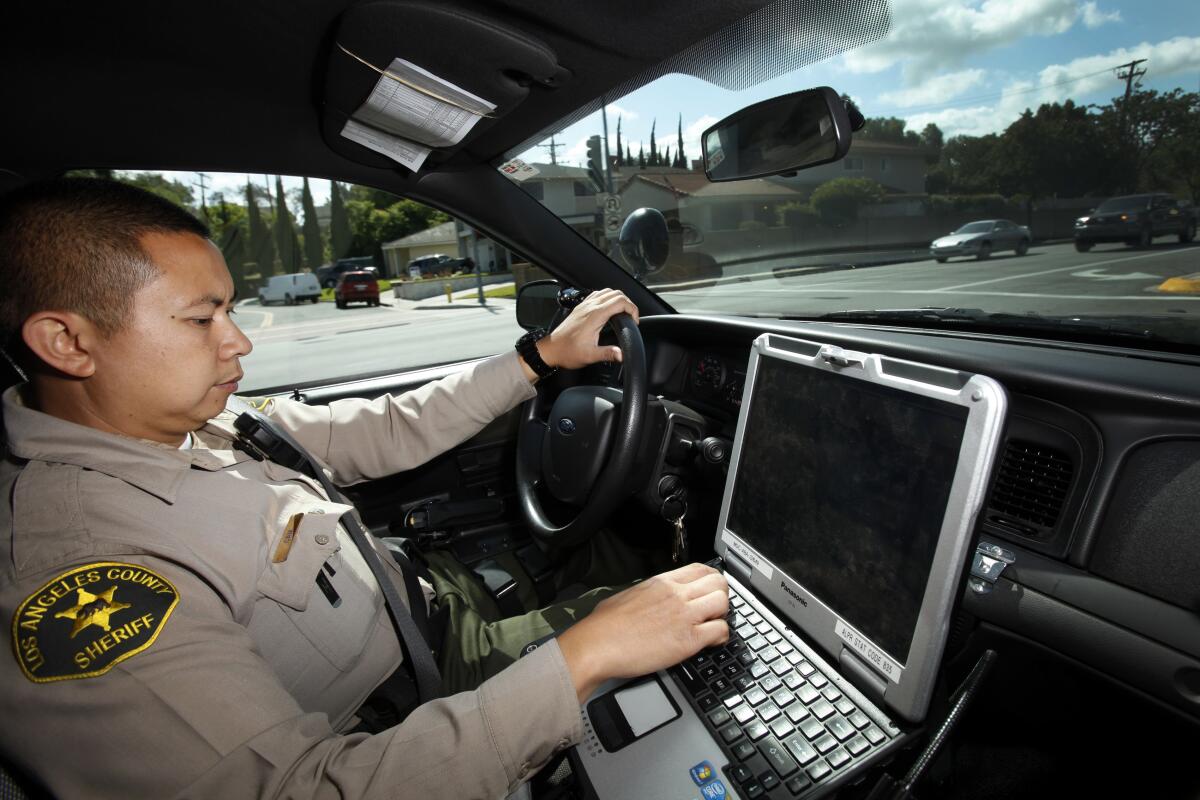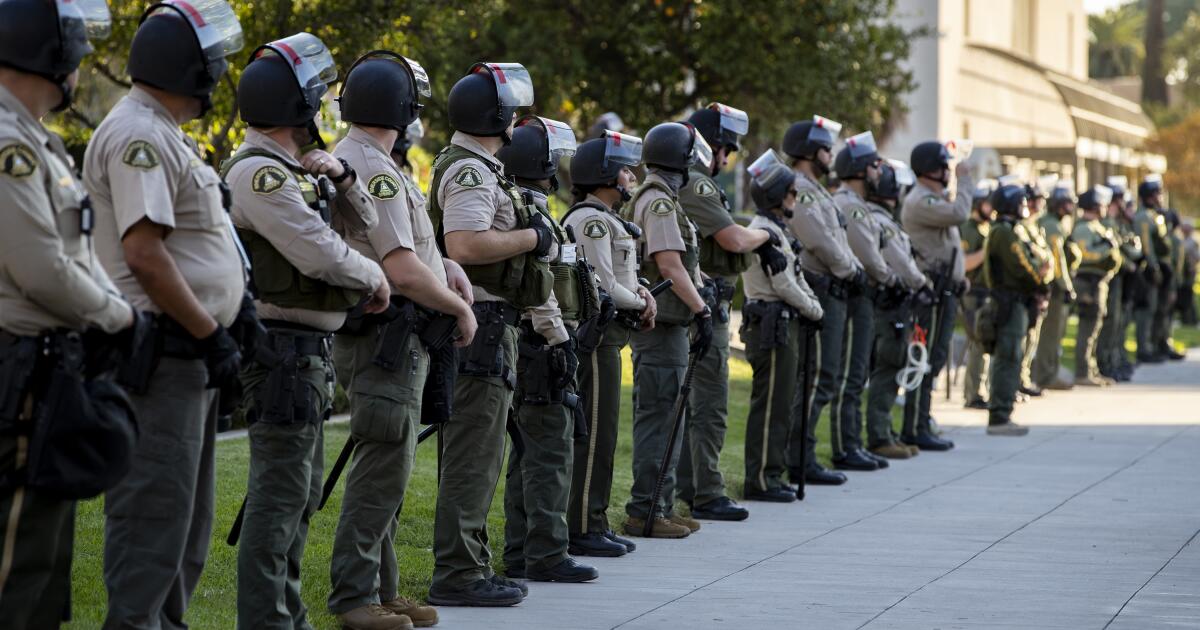Officials move to keep ICE away from L.A. County license plate data
Los Angeles County is moving to add more checks on how federal immigration officials can access data collected by the Sheriff’s Department that can be used to track where people drive on any given day.
County supervisors voted Tuesday to approve a motion, introduced by Supervisor Hilda Solis, to beef up oversight of data gathered by law enforcement devices known as automated license plate readers.
It’s already illegal in California for local law enforcement agencies to share information gleaned from license plate readers with federal agencies such as U.S. Immigration and Customs Enforcement without a warrant.
But after a summer of ramped-up deportations, the county supervisors decided to impose more transparency on who’s requesting license plate data from the Sheriff’s Department — and when the agency provides it.
The change will create a clear policy that the data cannot be “disclosed, transferred, or otherwise made available” to immigration officials except when “expressly required” by law or if they have a warrant.
“In a place like Los Angeles County, where residents depend on cars for nearly every aspect of daily life, people must feel safe traveling from place to place without fear that their movements are being tracked, stored, and shared in ways that violate their privacy,” the motion states.
Supervisor Kathryn Barger cast the sole no vote. Helen Chavez, a spokesperson for Barger, said the supervisor voted against the motion because it calls for the county to support a bill that would limit the amount of time law enforcement can keep most license plate data to 60 days. Law enforcement has opposed that bill, she said.
Across the country, law enforcement agencies use cameras to collect data on millions of vehicles, poring over the records for clues to help find stolen vehicles, crime suspects or missing persons.
A sheriff deputy’s patrol car is equipped with a license plate scanner. The plate numbers are instantaneously processed and if the registered vehicle owners are wanted for felonies or certain types of misdemeanors, if they are registered sex or arson offenders or if an Amber Alert has been issued, an alarm will sound to alert the officer.
(Los Angeles Times)
The Los Angeles County Sheriff’s Department said in a statement it has roughly 366 fixed licensed plate readers from Motorola Vigilant and 476 from Flock Safety in contract cities and unincorporated areas. An additional 89 mobile systems from Motorola are mounted on vehicles that patrol these areas.
The department said its policy already prohibits it from sharing data from plate readers, known as ALPR, with any entity that “does not have a lawful purpose for receiving it.”
“LASD shares ALPR data with other law enforcement agencies only under an executed inter-agency agreement, which requires all parties to collect, access, use, and disclose the data in compliance with applicable law,” the statement read. “LASD has no current agreements for ALPR data sharing with any federal agency.”
Tricia McLaughlin, assistant secretary for the Department of Homeland Security, said in a statement that the agency has multiple resources at its “fingertips to ensure federal law is enforced in Los Angeles, and throughout the entire country.”
“These sanctuary politicians’ efforts to stop the Sheriff’s Department from cooperating with ICE are reckless and will not deter ICE from enforcing the law,” McLaughlin said.
Southern California law enforcement departments — including LAPD and authorities in San Diego, Orange and Riverside counties — have been accused of routinely flouting state law by sharing license plate data with federal agents. A recent report from CalMatters cited records obtained by the anti-surveillance group Oakland Privacy that showed more than 100 instances in a single month when local police queried databases for federal agencies.
“When you collect this data, it’s really hard to control,” said Catherine Crump, director of UC Berkeley’s Technology & Public Policy Clinic. “It’s no different from once you share your data with Meta or Google, they’re going to repackage your data and sell it to advertisers and you don’t have any idea which of the advertising companies have your data.”
Even with the board cracking down on data sharing, advocates say it’s nearly impossible to ensure federal agents are barred from license plate data in L.A. County.
Dave Maass, the director of investigations for the Electronic Frontier Foundation, said private companies that operate in California still collect and sell data that ICE can use.
U.S. Customs and Border Protection also has its own license plate readers around Southern California, he said.
Maass said even if a county bars its local sheriff’s department from sharing data with ICE, it’s difficult to guarantee the rule is followed by the rank-and-file. Immigration officers could informally pass on a plate number to a deputy with access to the system.
An L.A. County Sheriff’s Department patrol car equipped with a license plate reader can scan somewhere between 1,000 and 1,500 plates a day.
(Los Angeles Times)
“Maybe they run the plate,” Maass says. “Unless there’s some public records release from the Los Angeles side of things, we just really don’t know who accessed the system.”
Under the motion passed Tuesday, the sheriff department would need to regularly report what agencies asked for license plate data to two county watchdogs groups — the Office of Inspector General and the Civilian Oversight Commission.
“Having somebody who is somewhat independent and whose role is more aggressively overseeing reviewing these searches is actually quite a big deal,” Maass said.

